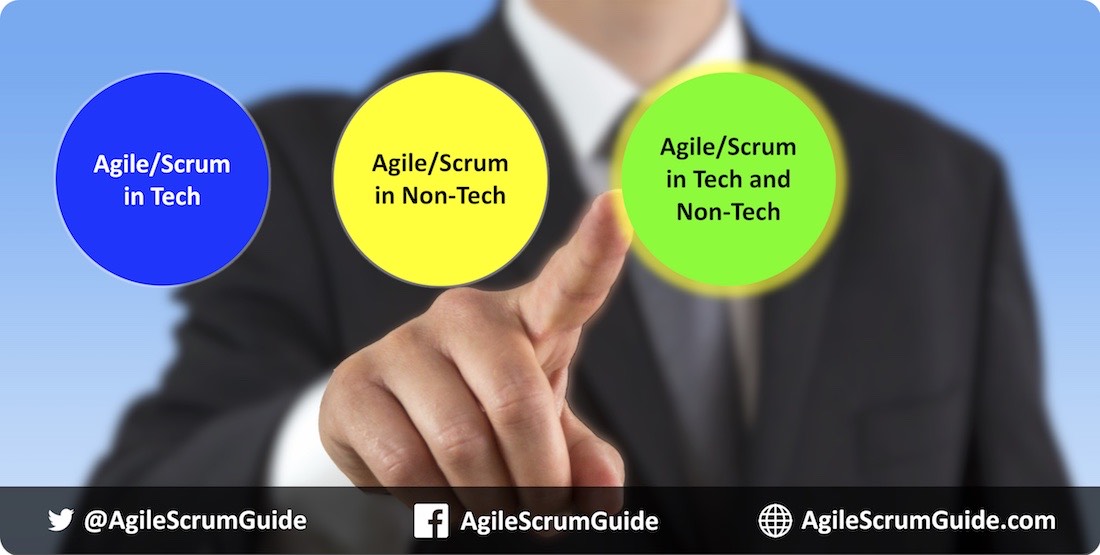Agile Outside Tech
Are Agile and Scrum Limited to Technology Projects or Technology Industries?
02 April 2018


Agile Workflows

Businesses must be adaptive and responsive to change while delivering an exceptional customer experience to be competitive in today's marketplace. Traditional development and delivery frameworks are often ineffective. In contrast, Scrum is a value-driven agile approach which incorporates adjustments based on regular and repeated customer and stakeholder feedback. And Scrum's built-in rapid response to change leads to substantial benefits such as faster time-to-market, higher satisfaction, and continuous improvement—which supports innovation and drives competitive advantage.
Agile and Scrum were once the sole domain of technical software projects which includes video game development(1)(2)(3). However, the benefits and results have not gone unnoticed by others. Practices are being adopted by additional, non-technical departments and industries for their projects. Examples follow.
- The State of Scrum Report(4) revealed that 21% of Scrum projects are run by departments outside of Technology such as Marketing, Finance, and Sales.
- An article published in The New York Times(5) noted agile's use in diverse industries—with examples ranging from a museum in Sydney, Australia, to an automobile dealership in Maine.
- A business brief(6) illustrated how varied businesses—including John Deere, NPR, and Mission Bell Winery—employed agile.
In summary, agile and Scrum are used broadly. It's for video game development as well as other technical and non-technical projects.
For more information on Scrum, pick up a copy of the award-winning book, Agile Scrum: Your Quick Start Guide with Step-by-Step Instructions, at Amazon.
References:
(1) Godoy, A., & Barbosa, E. (2010). Game-Scrum: An Approach to Agile Game Development.
(2) Guan, Y., Mikkonen, T., & Suomela, R. (2018). Continuous Experimentation in Mobile Game Development. 2018 44th Euromicro Conference on Software Engineering and Advanced Applications (SEAA), 345-352.
(3) Koutonen, J., & Leppänen, M. (2013). How Are Agile Methods and Practices Deployed in Video Game Development? A Survey into Finnish Game Studios. DOI: 10.1007/978-3-642-38314-4_10.
(4) Scrum Alliance (2017). The State of Scrum Report. Westminster, CO: Scrum Alliance, Inc.
(5) Hardy, Q. (2016, November 25). "The New Workplace is Agile, and Nonstop. Can You Keep Up?" The New York Times, page B1.
(6) Rigby, D. K., Berez, S., Caimi, G., and Noble, A. (2016). Bain Brief: Agile Innovation. Boston, MA: Bain & Company.

Let's Connect

Connect with AgileScrumGuide.com on Facebook, Twitter, LinkedIn, Instagram, and Pinterest.
And connect with agile project management practitioner, consultant, award-winning author, and international speaker Scott M. Graffius on Twitter, Facebook, and LinkedIn.

© Copyright 2019 Scott M. Graffius, AgileScrumGuide.com. All rights reserved. This material may not be published, broadcast, rewritten or redistributed without the express written permission of Scott M. Graffius/AgileScrumGuide.com.
